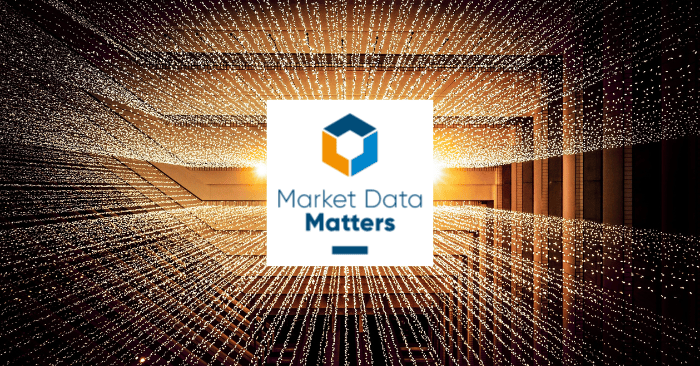In 23 years in the industry, Aaron has dealt with market data compliance from all sides. After more than 12 years at the London Stock Exchange writing exchange policies and running user audits, he handled third-party contracts for Bloomberg then worked on policy and compliance at NYSE Euronext.
In 2014, Aaron founded Axon to help clients track and comply with exchange policies. TRG Screen, the market leader in enterprise subscription management for market data, acquired Axon in 2019.
Here, he answers questions on the roots of complexity, what changes in the use of data mean for compliance, and how to avoid a painful audit.
What’s behind the increasing complexity of stock exchange policies? A big change in recent years has been the greater use of non-display data used to drive an algorithm or fed into a proprietary application. How far is the increase in non-display data usage behind this?
Policies focus very much on what we all think of as non-display, which would be algorithmic trading. But that's just one aspect of the way a bank will use the data. The exchanges have realized that they actually use it for constant analysis, to back test, to manage their risk management, to calculate their P&L. And all of these are nuanced, slightly different use cases.
The Tier 1 banks can have 10s of applications using data. They can have server farms running algos on 20, 30 servers. And all that is a much more complicated use than a small hedge fund that, on the face of it, is doing the same thing but in much smaller volume.
The use cases are complicated, the way data is used is complicated and therefore the policies kind of have to reflect that.
Doesn’t this make complying with exchange policies more challenging?
Nowadays a user could be a person or an application. But as the person within the data team, unless you dig into it, all you know is that a login has access to certain markets. What you’ve then got to find out is what it is doing with the data. Is it algorithmic trading, smart order routing, risk management, or some of the other category of non-display which varies the license? While the data team probably know where that data is going, now they are licensed by how it is used and we’d never been there before.
All we had to know was that person, that login has access. Easy. Now it’s that application that’s got usage and what is it doing with the data? That has added this extra level of complication.
How has the growth of algorithmic trading affected the exchanges?
This move from traders sitting there with a screen and deciding to trade, to a more computer-based, algorithmic way of trading, has meant smaller orders, smaller trades, much more frequent trades, ‘fill or kill’ orders that sit there for a minute or two then get cancelled and disappear. All of that puts strain on the system.
The exchanges had to react to that changing model.
Has this changed the relationship between exchanges, vendors like Bloomberg and Refinitiv, and the end-user?
With display, users still report to the vendor, the vendor collects the money, the vendor reports to the exchange and pays.
Non-display has tended to be a more direct relationship. The vendors have to tell the exchange which consumers have a data feed…so the end-user goes to the exchange and gets a license and the vendor’s cut out of that contractual relationship almost entirely.
What shifted about 10 years ago is that exchanges started to audit just the end-consumer and miss the vendor out. The vendor very rarely gets held responsible for what the end-consumer is doing with data that's provided by a data feed, the exchange will tend to audit under the vendor’s contract, technically, and go straight to the end-consumer, audit them on site, find out what data they use and present them with a bill.
How have data audits changed and what can a user expect?
An audit tends to be just about working out what should have been declared and making good for that. Audits are time-consuming. They will always last months because they are complex. Generally, they are on site. There is a lot of getting time in people’s calendars, lining things up, pulling reports, questioning things. And whilst they might only happen every three years or so, if you consider that most banks will be subscribing to 40 or 50 major exchanges, they're essentially an ongoing thing. A customer will always have at least one if not several.
For each exchange, if you read their documents, you can work out what you're supposed to do. And they're all quite sensible. The issue is volume, that as a customer, you've got so many of them, and that's where it becomes complicated. I don't see why that's going to change either. That's just a fact of this this industry, unfortunately.
So how to avoid under-reporting data usage, under-licensing, and perpetual painful audits?
It seems clear from Aaron’s words that the key is knowing exactly who, or which application, is using what data and how. TRG Screen is the only vendor offering solutions to manage data spend, usage, compliance and enquiries.
Now it is phasing in a new platform called Optimize, which promises unparalleled clarity on an enterprise’s data landscape and, for the first time, tailor-made actionable insights on how to enhance efficiency and save money. Optimize combines the best of TRG Screen’s existing products. Through Optimize, users can track, monitor and demonstrate compliance with vendor agreements. Managers can see whether users are sharing their credentials or accessing unlicensed resources.
With the market data landscape only likely to grow in complexity, the risk of a potentially costly mis-step in compliance also grows. It’s never been more important for data managers to optimize their view of the data universe to ensure market data compliance. TRG Screen's market data compliance products reduce your market data compliance risk by disrupting current market data management practices with its automated processes designed by industry-leading experts with a focus on automating compliance, reporting and policy management.
Want to learn more about how to Optimize your view of the data universe to ensure compliance?







